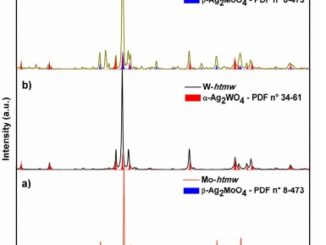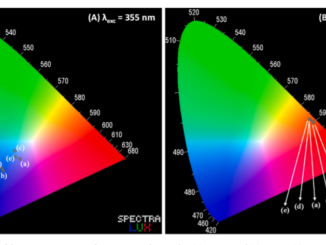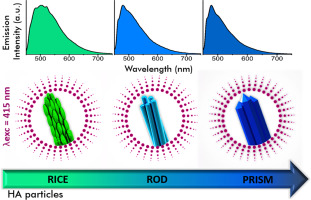
Insights into the Morphology and Structural Defects of Eu-Doped Ceria Nanostructures for Optoelectronic Applications in Red-Emitting Devices
Abstract: In this work, we investigated the synthesis temperature effect on the crystal growth of Eu-doped ceria nanostructures synthesized via the microwave-assisted hydrothermal method and how it influences their red-light emission. Sphere-like nanoparticles, nanorods, nanorods/nanocubes, and nanocubes were obtained by gradually increasing the synthesis temperature. The structural analysis revealed that the nanocubes displayed higher crystallinity and lower structural disorder in comparison to the other morphologies. X-ray photoelectron spectroscopy (XPS) spectroscopy showed that oxygen vacancies were the predominant defect. The intensity of the photoluminescence emissions of the nanocubes was 60 times higher than that of the sphere-like nanoparticles and nanorods, indicating that the structural symmetry in this morphology is suitable for doping with Eu3+, displaying greater photoluminescence efficiency. The nanocubes also displayed excellent red-light emission, with coordinates (0.63,0.37) close to the red RGB primary at (0.64, 0.32). The lifetime values increased with higher synthesis temperatures. This trend suggests a structural correlation of different morphologies, defects, and homogeneity of the Eu3+ distribution in the crystal lattice and the photoluminescence emission and quenching. Therefore, we showed that controlling the morphology of Eu-doped CeO2 nanostructures is a powerful tool to improve its photoluminescence properties, which is valuable for applications as a red phosphor.
Author(s): Pedro Paulo Ortega, Rafael Aparecido Ciola Amoresi, Marcio Daldin Teodoro, Leonnam Gotardo Merízio, Miguel Angel Ramirez, Celso Manuel Aldao, Cesare Malagù, Miguel Adolfo Ponce, Elson Longo, and Alexandre Zirpoli Simões
ACS Appl. Nano Mater.
Published: May 22, 2024
DOI: https://doi.org/10.1021/acsanm.4c00875
CDMF
The CDMF, hosted at the Federal University of São Carlos (UFSCar), is one of the Research, Innovation and Dissemination Centers (RIDC) supported by the São Paulo State Research Support Foundation (Fapesp), and also receives investment from the National Council Scientific and Technological Development (CNPq), from the National Institute of Science and Technology of Materials in Nanotechnology (INCTMN).




